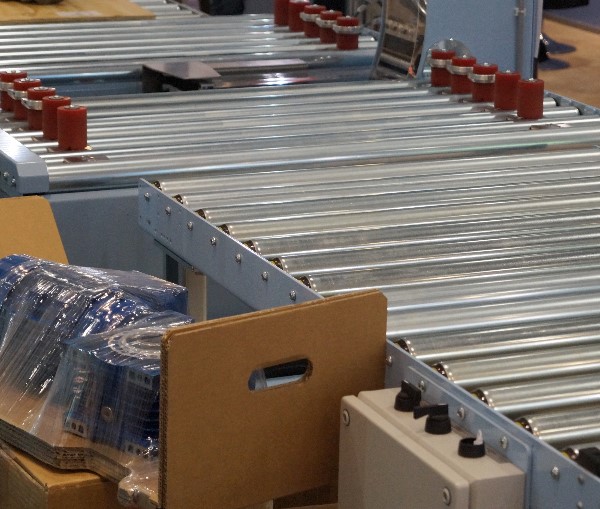Calculation of industry conveyor belt systems - Calculate Now
Things to know about conveyor belts and conveyor systems

Conveyor belts used in many companies, factories and businesses have long been indispensable. For quite some time now, conveyor belts have been used in a variety of ways and have ensured higher productivity. Over the years, the quality and technical range of conveyor belts have increased significantly, but more on that later. By the way, many companies only use conveyor belts on loan instead of purchasing them.
Conveyor systems and conveyor belts industry
Conveyor belts or conveyor systems do not always meet the expectations or necessary specifications of the company in question, which is why special designs often have to be made here and it is necessary to develop and design specific, individual conveyor belts. This falls into the category of "special machines": special machines are machines that are not manufactured on a daily basis, nor in large quantities, but are manufactured specifically according to the needs of industrial customers and companies that describe their necessary specifications and have a machine manufactured that is necessary for them.
However, the purchased conveyor belt is again not able to manufacture only certain products, here the only focus is on serial production. After all, this offers some advantages: fast, cheap and little effort. In addition, conveyor belts are virtually predestined for series production; after all, it is not for nothing that the popular saying goes "that comes off the conveyor belt".
Conveyor belts are therefore indispensable in industry; life without them would be unimaginable, as otherwise no economic efficiency can be guaranteed .
However, quite a lot has changed in the history of conveyor belts. Whereas they used to be controlled manually, computers have long since taken over, and virtually everything is controlled and refined by software as far as production processes are concerned.
Only the maintenance of conveyor belts and their wearing parts must always be checked and handled by human workers; after all, no company can afford a possible loss of production. Regular maintenance prevents unexpected breakdowns. Wear parts should always be at hand and in stock, they are even specifically mentioned in the product descriptions and installation instructions of the conveyors to accommodate the entrepreneur.

Conveyor belt rental and used conveyor belts
Conveyor belt rental offers enormous financial advantages, especially if they are not used constantly, but only temporarily during a production or work step, and therefore it would not be worthwhile to purchase them. Another advantage of renting a conveyor belt from a rental company is that you will find a wide range of conveyor belts and can rent a conveyor belt that is specifically tailored to your needs. Rental companies offer a detailed overview of their products in advance and also provide cost estimates. Detailed lists of conveyor belt rentals can be found on the Internet, where regional rental companies can also be located, minimizing transportation costs and associated hassle.
Another option for companies that want to obtain a conveyor belt as cheaply as possible is to buy a used unit. Here you can save 50 percent or more compared to new equipment and also have a good, if not quite as wide (because it is less manageable) selection of conveyor belts. In individual cases, conveyor belts can be found in special advertising magazines of agricultural journals or in the daily newspaper, but there are also machine or agricultural machinery exchanges where conveyor belts can be purchased cheaper than in specialized stores.
The only disadvantage with used conveyor belts is that you have to be willing to compromise if you buy a conveyor belt that has already been in operation. It will not automatically meet the standards and requirements of one's own needs and may have to be redesigned. It must also be possible to repair it yourself if it breaks down, as there is no warranty. In general, second-hand conveyors should only be used if the future operator is not too picky and is technically up to date to carry out maintenance or repair work. If this is the case, used conveyor belts can be a real bargain for the business.
Overview of different types & kinds of conveyor belts
Belt conveyor
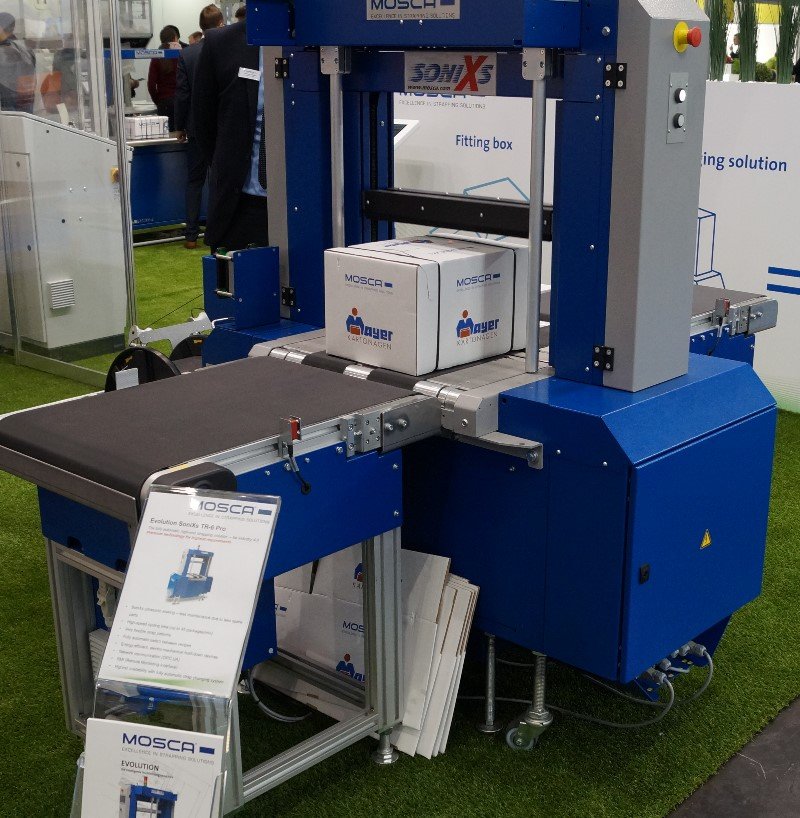 Probably the most commonly used conveyor belt type is the belt conveyor. The belt conveyor is used both indoors and outdoors and is often referred to as a belt conveyor or just a belt conveyor. As the name suggests, the belt plays the most important role in this design. This belt, which can be as long as required, runs as an endless belt on rollers and is thus used to transport a whole range of goods, building materials and other materials. The belt conveyor is driven by a motor or electric drive. The conveyor belt ends with the so-called discharge, which, especially in the production of smaller goods, ensures a neat storage and landing, so that nothing "goes wrong". Often hoppers are also installed as aids at the end of the belt conveyor.
Probably the most commonly used conveyor belt type is the belt conveyor. The belt conveyor is used both indoors and outdoors and is often referred to as a belt conveyor or just a belt conveyor. As the name suggests, the belt plays the most important role in this design. This belt, which can be as long as required, runs as an endless belt on rollers and is thus used to transport a whole range of goods, building materials and other materials. The belt conveyor is driven by a motor or electric drive. The conveyor belt ends with the so-called discharge, which, especially in the production of smaller goods, ensures a neat storage and landing, so that nothing "goes wrong". Often hoppers are also installed as aids at the end of the belt conveyor.
Belt conveyors offer numerous advantages. They are very robustly built and therefore have very few wearing parts. This saves companies high repair and maintenance costs. Another advantage of belt conveyors is their easy handling. The design is uncomplicated, the performance enormous. The use of a belt conveyor is also suitable for particularly long distances, especially when a large number of goods have to be transported. The belt conveyor can be made of different materials, so PVC conveyor belts and non-woven conveyor belts can be found in the factories.
However, there are also negative characteristics of the belt conveyor that should be mentioned here: for example, it is not possible to handle inclines, but only straight stretches, in addition, the goods to be transported must not be hot, otherwise the rubber belt may be affected. And even those who want to move extremely heavy goods should rather not reach for the belt conveyor.
Belt Conveyor, Steel Belt Conveyor and Reverse Belt Conveyor
Steel Belt Conveyors, Magnetic Belt Conveyors & Wire Belt Conveyors
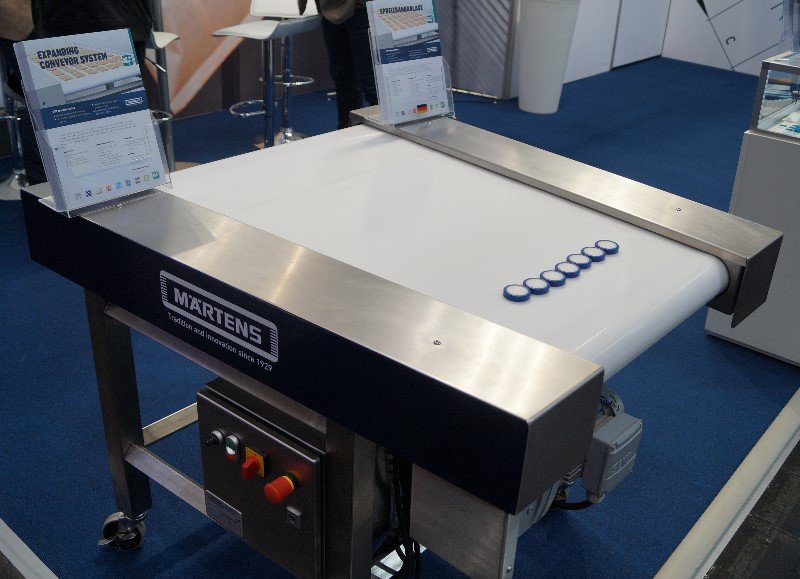 For goods with a little more weight, the steel belt conveyor is recommended instead. It is particularly insensitive, which is why goods of greater weight can be moved on this type of conveyor without any problems. In addition, the steel belt conveyor is very heat resistant. Thus, even goods that have just come out of the oven, for example glass items, can be transported. The steel belt conveyor is also equipped for other "problem articles". These include items that would cause a lot of abrasion on the rubber, contain very sharp objects, or are extremely sticky and only leave no marks on the steel belt conveyor.
For goods with a little more weight, the steel belt conveyor is recommended instead. It is particularly insensitive, which is why goods of greater weight can be moved on this type of conveyor without any problems. In addition, the steel belt conveyor is very heat resistant. Thus, even goods that have just come out of the oven, for example glass items, can be transported. The steel belt conveyor is also equipped for other "problem articles". These include items that would cause a lot of abrasion on the rubber, contain very sharp objects, or are extremely sticky and only leave no marks on the steel belt conveyor.
An alternative to the steel belt conveyor is the wire belt conveyor. It is mainly used when frozen products or other refrigerated goods need to be conveyed, but the wire belt conveyor is also suitable for washing operations and screening processes. In addition, not only straight-line travel is possible here, the conveyor belt in this case can also contain curves. In this case, the belt - as the name of the design already suggests - consists of a mesh of wires, but the drum is significantly smaller than in the steel belt conveyor variant. Between -50 and 1000 degrees may be the goods transported on this equipment. A conveyor length is reasonable up to about 250 meters, the width of the belt can be up to six meters.
Slightly narrower, as a rule, is the magnetic conveyor belt or the magnetic belt conveyor. However, it not only saves space, but also has another ability, which is already evident from the name: the magnetic conveyor belts provide easy sorting of metal objects or goods and those that are not metal, due to the magnetic function. This simplifies sorting or separation, saving time and money in production, production processes can eventually be significantly shortened. In addition, magnetic conveyors for magnetic materials can also be well used as vertical conveyors.
The advantage of the magnetic conveyor belt: the belt, which is made of stainless steel, is extremely robust and anything but fragile, so that the investment costs are worthwhile in any case and repair work is rarely on the agenda. The magnetic conveyor belt is mainly used to sort or separate punching waste or other metal particles.
Reversing belts
Entrepreneurs get a special technical opportunity with the reversing belt. If you look at the English word "reverse", you can probably already imagine the capability of reversing belts: they work exactly like belt conveyors - with the one difference that they can be controlled in two different directions. This is an advantage when not only components for a product need to be transported from A to B, but when ultimately the finished product needs to be moved back over the same distance (from B to A).
Telescopic belt conveyors & plastic link conveyors
If a belt conveyor is to transport goods not only over a level distance, but up or down, then it is recommended to purchase a telescopic belt conveyor. This is freely adjustable and ideal for loading and unloading trucks or higher storage areas. Because telescopic belt conveyors are often used outdoors or in different locations, they are also available as mobile versions or smaller versions.
Plastic link conveyors function in a similar way to telescopic belt conveyors. Primarily, they are used in the automotive industry. However, they have to meet some requirements for this. That is, they must be very robust, must not cost much, and must be easy to operate and maintain. Plastic link conveyors meet all of these conditions, which is why they are used more often than the somewhat more vulnerable belt conveyors, which may even cause belts to stop and then cause production downtime.
What is probably the biggest advantage, especially for companies dealing with automobiles or their accessories, is that the plastic link conveyors described here are very resilient and will not be affected even if there are traces of oil, water or brake fluids.
Toothed belt conveyor
Another type of conveyor is the toothed belt conveyor. It is about 10 to 50 meters long, works with a gear motor and can reach a belt speed between six and up to 20 meters per minute , this speed is freely selectable - depending on the needs. As the name suggests, a toothed belt is the main instrument in this device. According to the requirement, the toothed belt conveyor can be installed as a multi-track conveyor, single conveyor or double conveyor.
Mobile conveyors and conveyor technology bulk material
Mobile belt conveyors prove it: conveyor belts do not necessarily have to be permanently installed in a company hall or on the premises of a company, they can also be moved to wherever they are needed at the moment. That is why mobile belt conveyors are becoming more and more popular. Thus, they are mainly found on trucks or at companies that need belt conveyors at changing locations. This makes the company operator much more flexible, moreover, this type of conveyors - similar to the telescopic belt conveyors can be adjusted upwards or downwards, making it much easier to load and unload goods.Spiral conveyor
If steep upward transport is required, i.e. goods are to be moved vertically, a spiral conveyor is recommended. It allows goods to be moved from the bottom to the top or vice versa and is particularly suitable for building materials or materials consisting of many small parts (e.g. sand, grain or pebbles). In the spiral conveyor, they are moved by jerky movements. Certain vibrations are generated by the drive, which is why, in addition to the spiral conveyor, it is also referred to as a vibratory conveyor.
The biggest advantage here is that hot products can be transported and no longer need to be cooled by special technology. This is done automatically during the bumping movements, so that the particles are cooled down by themselves at the end of the conveyor belt. This saves costs.
Step Stroke Conveyors, Linear Conveyors & Drum Conveyors
Also very cost-saving is the step-stroke conveyor. It is very simple in construction and works on a simple principle, although it is very robust and resilient. As the name implies, goods can be conveyed here in height or in depth, and the orientation of the conveyor belt can be adjusted by a step-by-step control. Even larger parts can be moved and even sorted with the step lift conveyor. Its name is also due to the fact that the various production processes are carried out in several stages, and this conveyor is virtually predestined to carry out these stages.
Such a step-lift conveyor is used, for example, at BMW and its assembly of the engine. The principle of the step-lift conveyor is similar to that of the bowl feeder. To stay with the spiral conveyor, those who have it may also like to use a linear conveyor.
Linear convey ors are generally responsible for the horizontal transport of goods. At the same time, they form the link between the bowl feeder and the machine that comes next, which is responsible for further processing in a plant. Here, too, vibrations provide the necessary movements.
If small parts are to be sorted, disentangled or fed on a large scale, a bowl feeder is recommended. It prepares production parts and forwards them to certain machines or systems where they can then be further processed. The conveyor is called a drum conveyor because all the items to be conveyed are located in a large drum and are whirled around there as required and sorted if necessary. Here, too, it is mainly bulk materials that are transported further.
Screw conveyors
An alternative to this is the screw conveyor. Here, the bulk material can be transported and moved in all directions, i.e. horizontally, vertically and even diagonally. In addition, goods can be cooled or mixed by the movements described here. However, the screw conveyor should only serve a very short distance, otherwise the effort is too great.
In detail, one distinguishes between several types of screw conveyors. For example, there are the tubular screws. They are used not only for transport, but also like trough screws, for mixing objects for forwarding for processing or for cleaning goods. The size of the trough or pipe screw required can vary depending on the type of goods.
Stainless steel screws work on the same principle, but their design makes them quite a bit more robust. Here, even larger and heavier goods can be transported, moved and also rotated.
If several processes are to take place at the same time, the installation of a twin screw or triple screw is recommended. The production process is a bit faster here, but any repair or maintenance work that may be required will be a lot more complicated.
There is also a model specifically for the "mixing" area: the mixing screws, which ensure the right mixture in the toolbox for a set of nails, for example.
Take-off conveyors & twin conveyors
A twin conveyor belt or take-off conveyor belt involves two conveyor belts lying next to each other, usually driven separately. The material to be conveyed then lies less on the respective belt but between the conveyor belts and is moved by both at the same time. The use of this conveyor system is suitable for picking up long or overlong piece goods or for changing the transport direction at right angles when the goods are taken off a transfer conveyor belt and for separating the goods to be conveyed in order to prepare them for the next processing steps.
Articulated conveyors
Articulated conveyors are mainly used for bulk materials such as coal and salt and are used here as an aid in unloading trucks. Articulated conveyors are preferably attached to tipping vehicles or walking floor vehicles and are the preferred choice here due to their low dead weight. Due to their swiveling mechanism, they allow the bulk material to be unloaded with pinpoint accuracy. Articulated conveyors can be permanently attached to a truck or can be mounted to the truck only when needed.
Inclined Belt, Roller Belt and Vacuum Conveyor Food
Inclined & steep incline conveyors
Inclined conveyor belts are used in general cargo and bulk material handling and are mainly characterized by their small space requirements. As a rule, inclined conveyor belts are used whenever small parts are to be transported. They are designed in such a way that they are particularly suitable for integration into conveyor systems. They can also be used for filling containers. The kinks here have fixed angular degrees such as 15, 30, 45 and 60 degrees.
Roller Conveyor Belts & Roller Conveyors
Roller conveyors are characterized by the fact that they can be operated without electricity and yet have a very high transport speed. Roller conveyors are mainly used in the shipping industry, as they can be used to transport packages effectively. Roller conveyors are particularly suitable for overcoming large distances and can also be used to negotiate curves. As a rule, a geared motor then ensures the correct direction of the transported goods. Another characteristic of roller conveyors is their low noise level.
Small conveyor belts
Small conveyor belts are mainly used in mechanical engineering and wherever distances have to be covered by small parts. Small conveyor belts can be manufactured according to your ideas and needs. The belt widths of small conveyor belts range from 30 to 300 millimeters. To ensure that the small and delicate goods can be transported safely, the conveyor belt itself can be smooth, non-slip, studded and equipped with cleats.
Conveyor belt winches
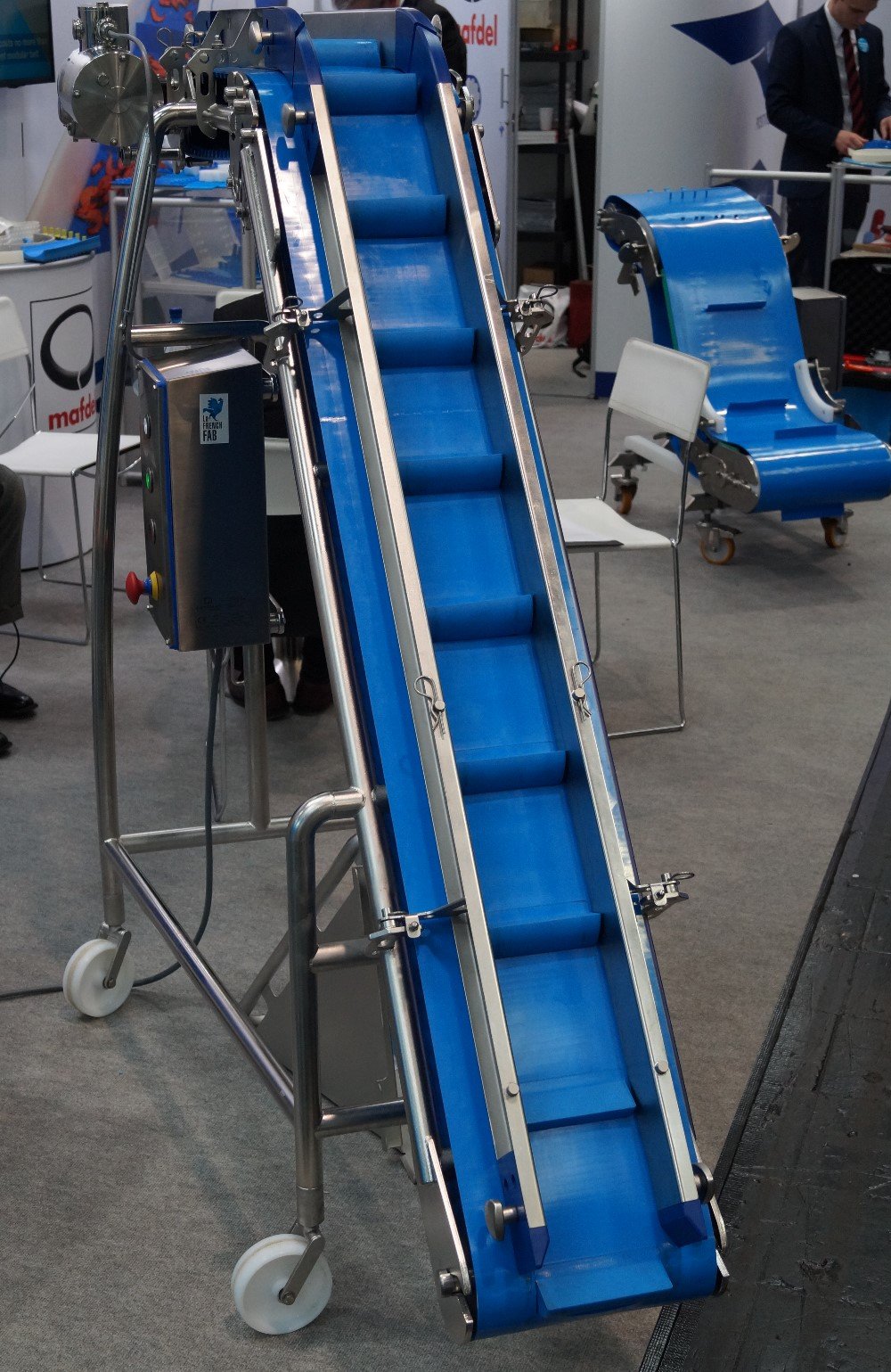 By using conveyor belt winches as conveyor belt accessories, the conveyor belts of a conveyor belt can be adjusted in height. This is useful when the conveyor belts have to be adapted to different installation conditions and different angles have to be maintained. The conveyor belt winches change the rack length of the respective conveyor belts. The conveyor belt winches comply with a specific DIN standard and are thus available for all conceivable conveyor belts. Furthermore, special designs are also possible here.
By using conveyor belt winches as conveyor belt accessories, the conveyor belts of a conveyor belt can be adjusted in height. This is useful when the conveyor belts have to be adapted to different installation conditions and different angles have to be maintained. The conveyor belt winches change the rack length of the respective conveyor belts. The conveyor belt winches comply with a specific DIN standard and are thus available for all conceivable conveyor belts. Furthermore, special designs are also possible here.
Injector conveyor belts
Injector conveyor belts are a special type of conveyor belt used in blasting machines. These machines can be used to roughen, deburr, mat, clean, derust and shot-blast a wide variety of workpieces. Injector conveyors are driven manually or by motor and are always used when particularly heavy workpieces need to be blasted. The speed of the injector conveyor belts can be adjusted individually, depending on the requirements.
Wide belt conveyors
Conveyor belts are available in a wide variety of designs. They differ in length and also in width. Wide belt conveyors therefore have a very wide conveyor belt and are used wherever larger goods have to be transported. This can be the case in a quarry as well as in a waste processing plant or even in a shipping department. Depending on the design, wide belt conveyors are operated manually by rollers or by a motor. Parallel conveyor belts or synchronous conveyor belts can also be used, which employ two rather narrow belts running in parallel. By changing the distance between the respective belts, the same system design can be used flexibly for different tasks and processes.
Conveyor systems
Electric lift truck and forklift
Lift truck
When talking about conveyor technology and conveyor systems, for the sake of completeness, the keyword "lift truck" must definitely come up. A lift truck is a small vehicle that is moved by muscle power or electric drive and is used to transport goods on pallets or in other forms with the appropriate packaging. A standard pallet truck consists of two forks, which are made of metal and are pressed under the pallet to lift it up. Of course, the rollers are also an important component of the lift truck. In order for it to move well, these are also steerable in all directions.
The lift truck is pulled by a long lever, which in the case of manually operated equipment is also used to move the forks up and down. In addition to so-called low-lift trucks, which can mainly move objects standing on the ground, a distinction is also made between high-lift trucks. They can reach up several meters and are mainly used for loading pallets in huge warehouses.
The weight that a hand pal let truck can move is several tons, but the limit is 10 tons maximum. Electric pallet trucks are even a touch more sophisticated than the variant that is pushed or pulled: here there is even a standing place for the operator of the device. However, there is still a huge difference from the hand-operated pallet truck: it is necessary for the electric pallet truck a kind of "driver's license" to ensure the safety precautions .
Pneumatic drives and conveyors
Pneumatic drives and pneumatic tube
Due to certain risks, instead of the electric drive, the pallet trucks with manual operation and pneumatic function are usually preferred. By means of compressed air, the fork of the lift truck can be moved upwards. This is helped by the compressed air generation, distribution and treatment, which in a well-designed system literally help the operator of the pallet truck. The advantage of the pneumatic drive is that energy is always available and the lift truck can therefore always be put into operation.
The cost of this is correspondingly low. One of the few disadvantages is the transportability, as it is limited in terms of weight. In addition to industry, where the pneumatic drive has been exploited since the end of the 19th century, it is also used in pneumatic tube systems . For this purpose, a message or a small object is transported in small cylinders. Pneumatic tube systems then transport the mailed item over kilometer-long tubes to its destination - conveyed, of course, by pneumatics, i.e. air pressure. In many companies, but also in entire city districts, there are such pneumatic tube networks. In the age of the Internet, however, they are no longer used quite as frequently.
Conveyor technology in logistics
But now back to conveyor technology. It also plays an important role in logistics. Logistics companies would no longer exist today without forklifts, pallet trucks, all kinds of conveyor belts and other materials handling equipment. Goods are stored in oversized halls and delivered on a large scale. Here, the technology must not fail - only the best material is required. After all, logistics companies cannot afford breakdowns, and maintenance work should also only be carried out as rarely as is somehow necessary.
In addition to freight forwarders, many other companies must also have systems that are as sophisticated as possible in terms of logistics in order to be able to operate economically. Here, too, materials handling technology - especially that with pneumatic drives, because it offers so many advantages - plays a major role. Here, not only money but also time and manpower can be saved thanks to lift trucks and the like.
Conveyor belts bulk material and conveyor systems piece goods
The right system for every material to be conveyed
Conveyors and conveyor systems come in a wide variety. Companies should orient themselves according to their needs and the products they produce when it comes to purchasing a conveyor system. After all, there is the right system for every material to be conveyed.
There we have, for example, bulk material. Bulk material means gravel, sand, road salt and similar materials that can be found on the construction site. But it also includes raw materials - such as coal - as well as foodstuffs such as flour, coffee or grain. They are transported by pipes that are operated according to the pneumatic principle, i.e. with air pressure. Vibratory conveyors are also frequently used to transport these goods. The whole thing is usually stored in huge silos.
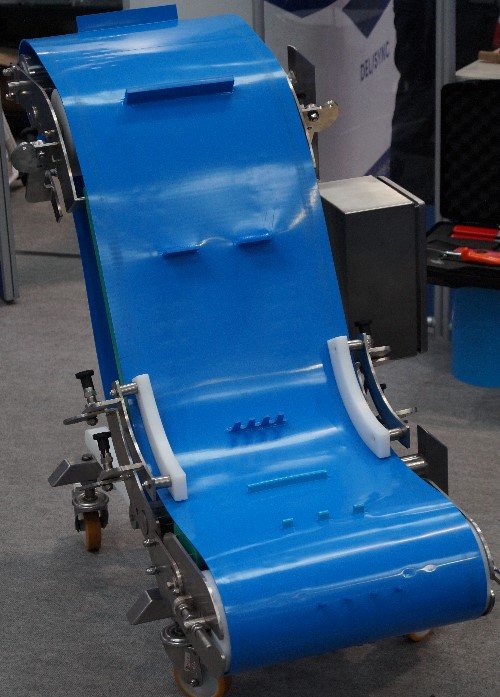 It sounds similar, but it is clearly different from bulk material, the general cargo. In fact, this is a term that refers to a compact number of goods that can be found in a box, for example, or bundled or grouped together on pallets, in barrels or other containers. There are various options for transporting the general cargo. One of them is the container, which is transported by ship or plane. Otherwise, we find general cargo mainly on vehicles such as trucks or other transporters. In the plant itself, they are moved via belt conveyors or, in the case of higher weights, also via steel belt conveyors.
It sounds similar, but it is clearly different from bulk material, the general cargo. In fact, this is a term that refers to a compact number of goods that can be found in a box, for example, or bundled or grouped together on pallets, in barrels or other containers. There are various options for transporting the general cargo. One of them is the container, which is transported by ship or plane. Otherwise, we find general cargo mainly on vehicles such as trucks or other transporters. In the plant itself, they are moved via belt conveyors or, in the case of higher weights, also via steel belt conveyors.
Pellets, i.e. small pieces of wood, on the other hand, are handled in a similar way to bulk goods and, after production or creation, are collected as waste products by conveyor belt in hoppers or other collection containers, packed and delivered.
Finally, there are the industrial goods. They are often referred to as capital goods. They are not finished goods, but merely substances or raw materials that are needed in production. A capital good is usually transported via conveyor belt before processing takes place.
Feeding system and feeding technology
So-called feeding systems and feeding techniques are particularly important for longer production sequences that pass through several departments or stations. Today, they are part of every good factory production line and are a matter of course. Automation and thus independent production is becoming more and more important today because it allows costs to be saved and the number of products to be pushed up even further.
Without the feeding technology just mentioned, this would be inconceivable unless significantly more expensive labor were hired. Sources of error are also reduced by the automatic feeding systems, progress makes it possible.
Reduce production costs - automatic conveying systems for transported goods
Traceability of the transported goods, optimization of production processes and reduction of production costs through conveyor systems.
To stay with progress: Transport goods can now be increasingly better located and traced when they are sent on journeys. Among other things, GPS, GPRS and GSM can be used when a good is on its way by truck. But it is also possible to locate a driver via cell phone.
Goods traveling by ship can be identified on the spot by barcodes. So a lot has happened in this area and it will soon be possible to trace goods even more precisely during import and export.
Of course, it is not only traceability that is in the interest of entrepreneurs; from an economic point of view, it is equally important to focus on optimizing production processes and reducing production costs with the help of conveyor systems. Production processes can be optimized by various factors. These include: regularly checking machines for functionality to minimize technical problems and breakdowns; computerized monitoring of machines; consulting with specialists on which machines or equipment are best suited to the production in question; keeping informed about technology updates and always staying up to date.
These and other optimizations can improve production processes and thus automatically reduce production costs. The better the conveyor systems are developed and the more independently they work, the less manpower is required. Another advantage of conveyor systems is the time saved, which enables higher production volumes. Also, consolidated goods that are stowed in boxes or other containers can be better stored when this is done by lift trucks or other conveyor systems. Here, it has been proven that the storage space is utilized much better than by manual stowage. Of course, the existing systems must also be technically in order and regularly inspected.
Control concepts
Special control concepts for the existing conveyor systems ensure that production runs smoothly. As a rule, this involves software that manages the control of conveyor belts or similar transport systems in warehouses or other company areas. It also automatically indicates when the next machine maintenance is due or whether there is a technical defect, thus saving manpower.
Accident prevention and occupational safety, legal regulations and guidelines
However, the topics of accident prevention and occupational safety must not be neglected. For this purpose, the necessary safety guidelines concerning the machines must be strictly adhered to, so that no unpleasant incidents occur. In addition, training courses are unavoidable and in some cases even mandatory. The best example is the electric pallet truck. If it is operated by untrained personnel, accidents are virtually pre-programmed. This is why it is forbidden and a kind of "driver's license" must even be obtained in order for the electric pallet truck to be allowed to operate at all.
This is governed by legal regulations and guidelines, which are also regularly monitored by the regulatory authority and can have unpleasant consequences if violated.
Conveyor system assembly
Assembly, preventive maintenance, wear parts and repair
Wear parts
Wear parts are parts on machines or equipment that are quickly affected by frequent use and thus quickly cause a defect. They are not particularly robust and must be replaced frequently. On a conveyor belt, for example, this can be a metal bar, on a lift truck a suspension. However, wearing parts are often already listed in the operating instructions. They can be purchased from special mail-order stores. Wear parts can be very disruptive to production processes. The costs for typical wear parts should already be taken into account when planning and designing a conveyor system. Thus it can be economically more meaningful a plant more cost-intensive in the acquisition to prefer a more favorable however wear-prone plant.
Repair, maintenance and spare parts
The more often a repair is due, the more often the process belts or machines have to come to a standstill, thus interrupting the production process. That's why it's important to perform regular maintenance and replace parts when necessary. It is advisable to keep a small stock of important spare parts in order to be able to react more quickly and to ensure that a possible breakdown only lasts a short time. Otherwise, spare parts have to be reordered.
Conveyor belt costs offer
Costs are an important factor in any operation. They must be kept as low as possible due to economic efficiency. For production, this means firstly that as many conveyor and logistics systems as possible take over the work processes and complement each other, so that production can be faster, cheaper and without much effort . However, it is not only important to save on production with the conveyor systems, but the costs should already be kept as low as possible when purchasing them.
Here it is advisable, especially for small companies, to observe Internet ads, newspaper ads and special exchanges in order to purchase used conveyors or other equipment and thus save costs. The same applies to lift trucks and the like. Spare parts are also often available second-hand or can be acquired by cannibalizing old or cheaply purchased machines.
Buy and sell conveyor belts and conveyor systems in the marketplace
The basic offer in online stores often includes:
- Belt conveyors for small loads
- including a wide range of accessories
- as well as modification options according to your individual wishes and requirements.
The following conveyors are often available:
- from 50mm to 600mm width
- up to approx. 3m length
- conveyors from 200mm to 1000mm width
- up to approx. 4m length
- with belt loads up to 10 kg/m
- Special lengths are possible.
The condition of the belts for the conveyors are freely selectable.
In the conveyor marketplace you will soon find new conveyors, used conveyors, reduced conveyor systems, which you can order directly online in the store. Also for dealers we offer the possibility to list your products accordingly, just write us to...
Topics: industry, machinery, economy, production, transport, automation, special machinery, industrial machines, goods, industrial goods


